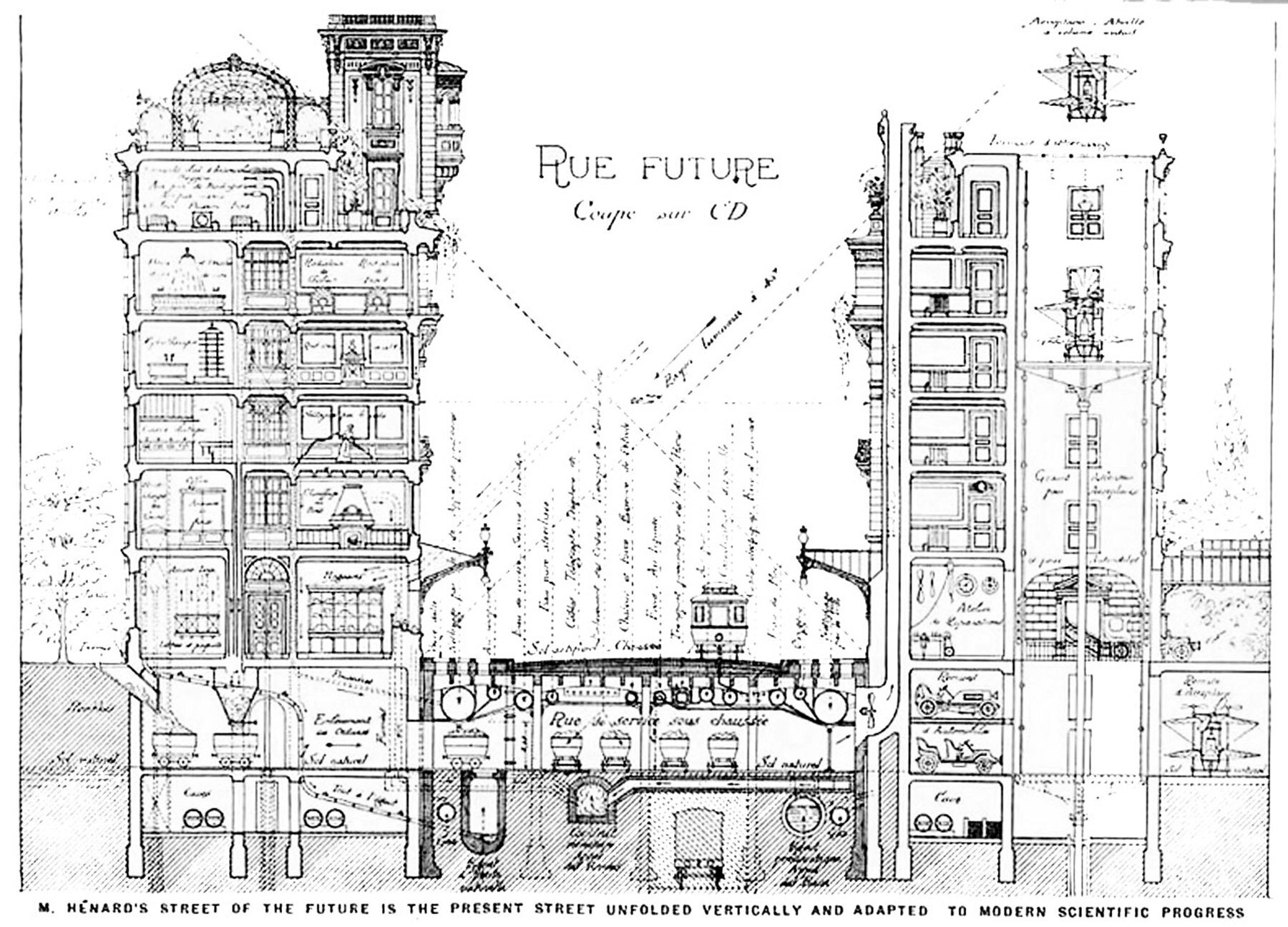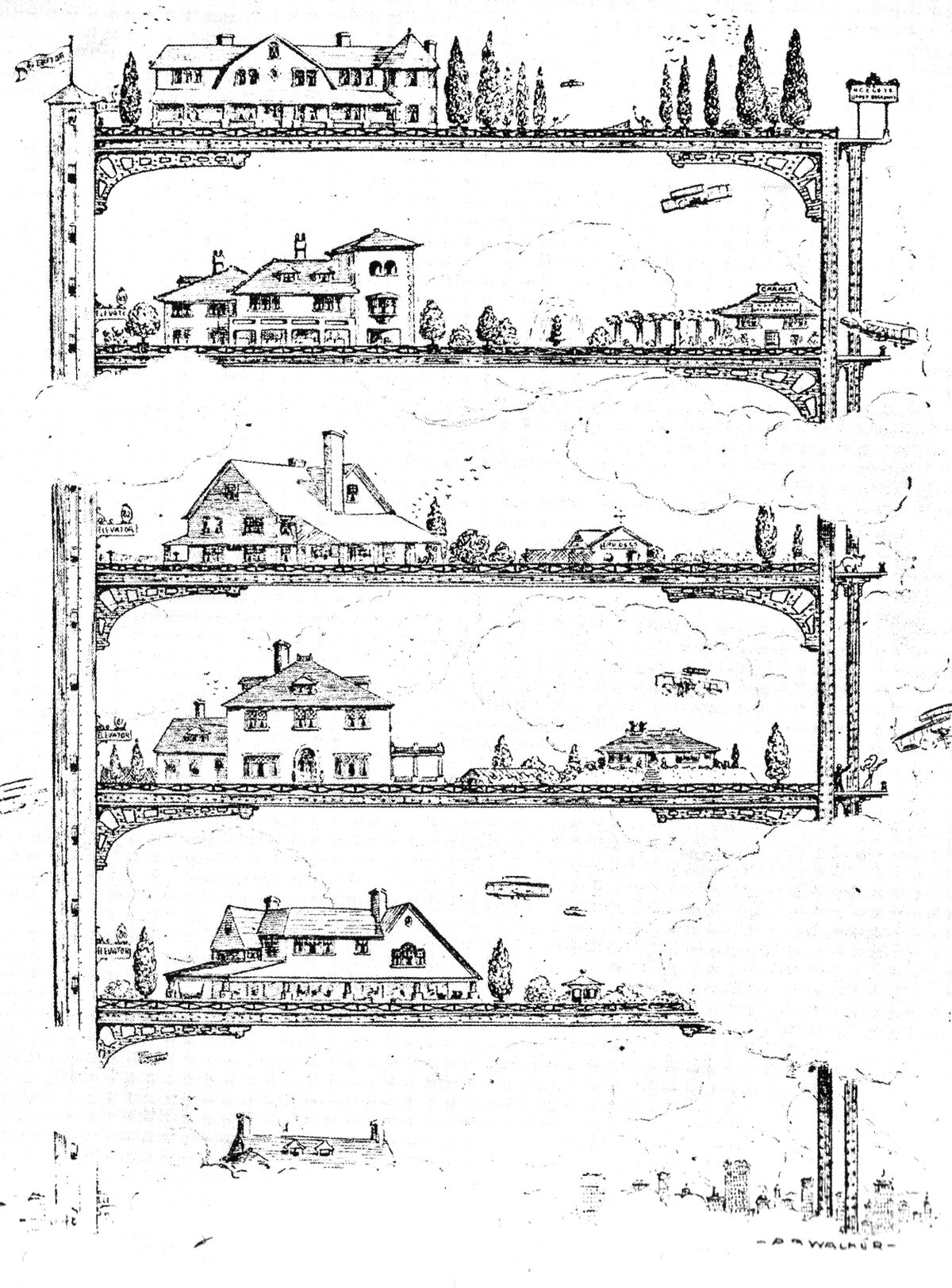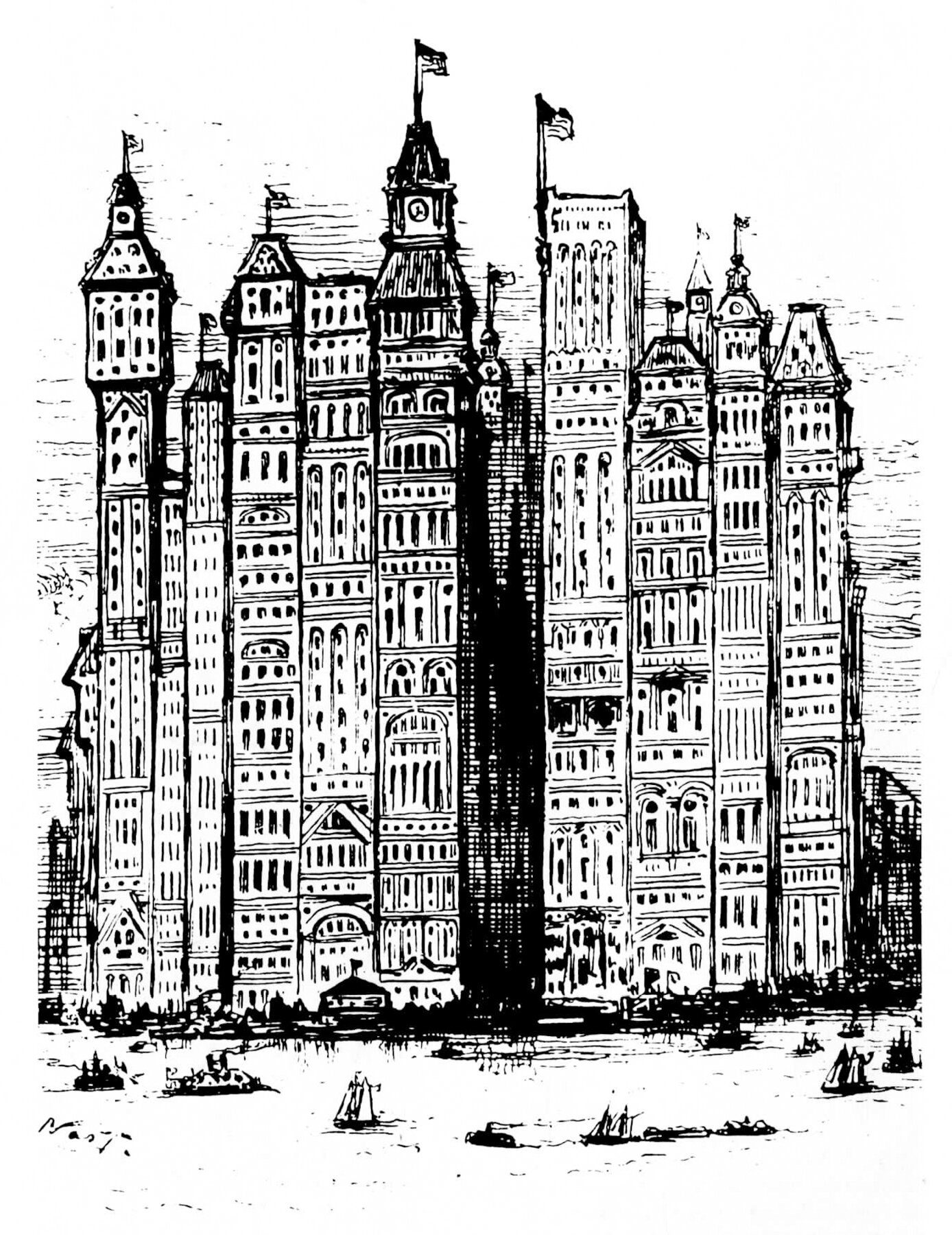Welcome to On Verticality. This blog explores the innate human need to escape the surface of the earth, and our struggles to do so throughout history. If you’re new here, a good place to start is the Theory of Verticality section or the Introduction to Verticality. If you want to receive updates on what’s new with the blog, you can use the Subscribe page to sign up. Thanks for visiting!
Click to filter posts by the three main subjects for the blog : Architecture, Flight and Mountains.

Cities of the Future from the Past
It's always interesting to see how previous generations viewed the future of their cities. In particular, the early 20th century was a hotbed for this type of thinking due to the emergence of the skyscraper as a building type.

Stacking Suburbia
One of the major challenges with the high places we construct is that we're built for a surface-based existence. The surface is where the action is, and it's where our species has lived and evolved since before we colonized the world. Even the Ancient Romans called their six- to seven-story apartment buildings insulae, which is Latin for island, symbolizing the isolation that comes with living and working away from the surface. The advent of the modern skyscraper brought with it the possibility of living and working far, far away from the surface, which creates a special set of problems. How can we recreate the variety of the surface in the sky?

Man Vs. Nature
A bit of context can change many things. Take a look at this drawing, titled Man Vs. Nature from a 1925 edition of Le Petit Larousse Illustré. The graphic compares the tallest works of architecture at the time to major mountain peaks from nature. It's a reality check to consider the size of the Eiffel Tower in Paris, shown as a tiny speck on the bottom left of the image.

Skylines As Value Indicators
Take a look at this 1881 Cartoon by Thomas Nast for Harper’s Weekly titled New York A Few Years from Now. Nast shows the southern tip of Manhattan Island, jam-packed with a phalanx of skyscrapers. The buildings are pushed so close together it’s hard to imagine where the streets are. Back in the shadows, you can just make out the spire of Trinity Church, which at the time was the tallest building in the country. Nast is being hyperbolic, of course, but the reality of most modern cities isn't far off.
The Language of Verticality
Phrases and sayings that convey the natural vertical hierarchy in our everyday lives.
Height and Verticality are closely tied to language. We have many phrases and sayings that convey the natural vertical hierarchy in our everyday lives. These generally align with the idea that high equals positive or good and low equals negative or bad.

High Places
Why do members of our species choose to climb mountains and seek out the highest places as a hobby or game? Seemingly, no other incentive exists other than the experience of being at the summit. As children, tree climbing and games like 'King of the Hill' illustrate our innate need to seek out the highest places for ourselves. Everywhere on the planet, high land is valued much more than low land, and those who 'occupy the high ground' nearly always have a distinct advantage over those who don't. Many of our most primitive towns and villages were located at high points in the landscape, and in modern cities, apartments or offices on the highest floors of buildings are the most coveted.
